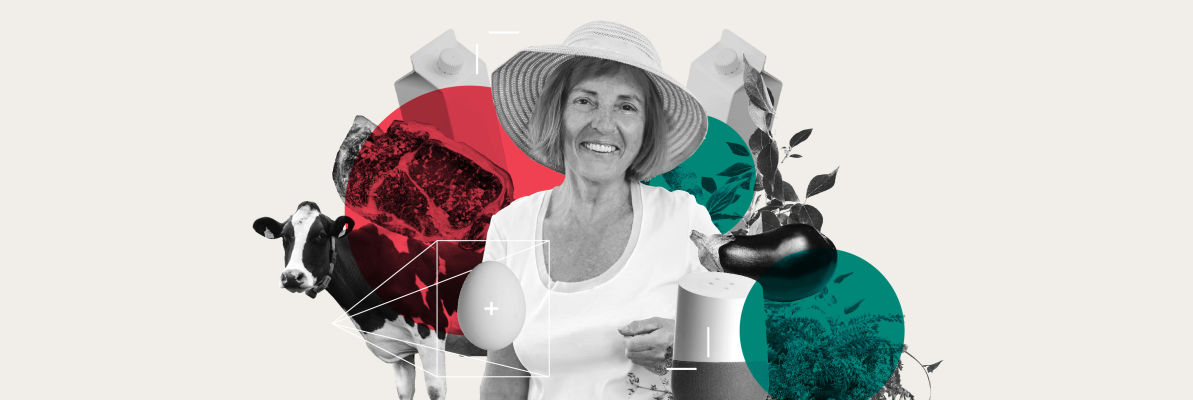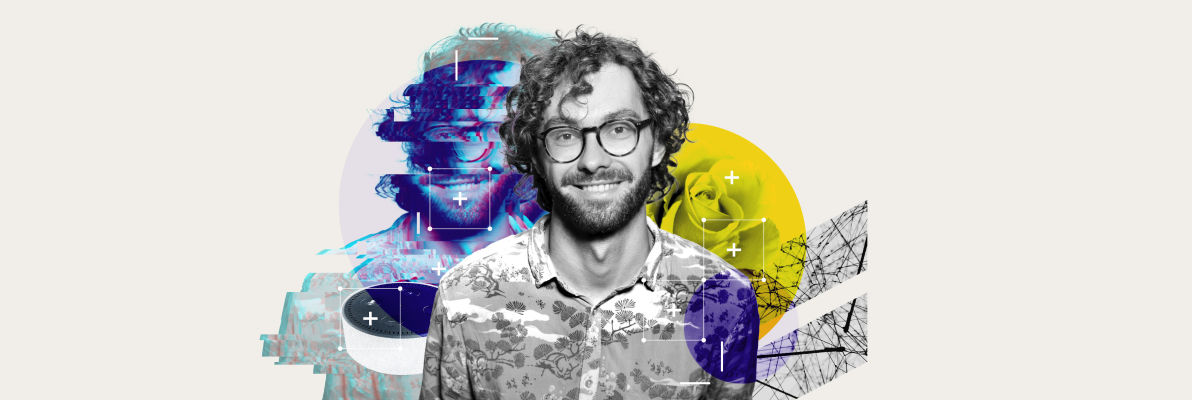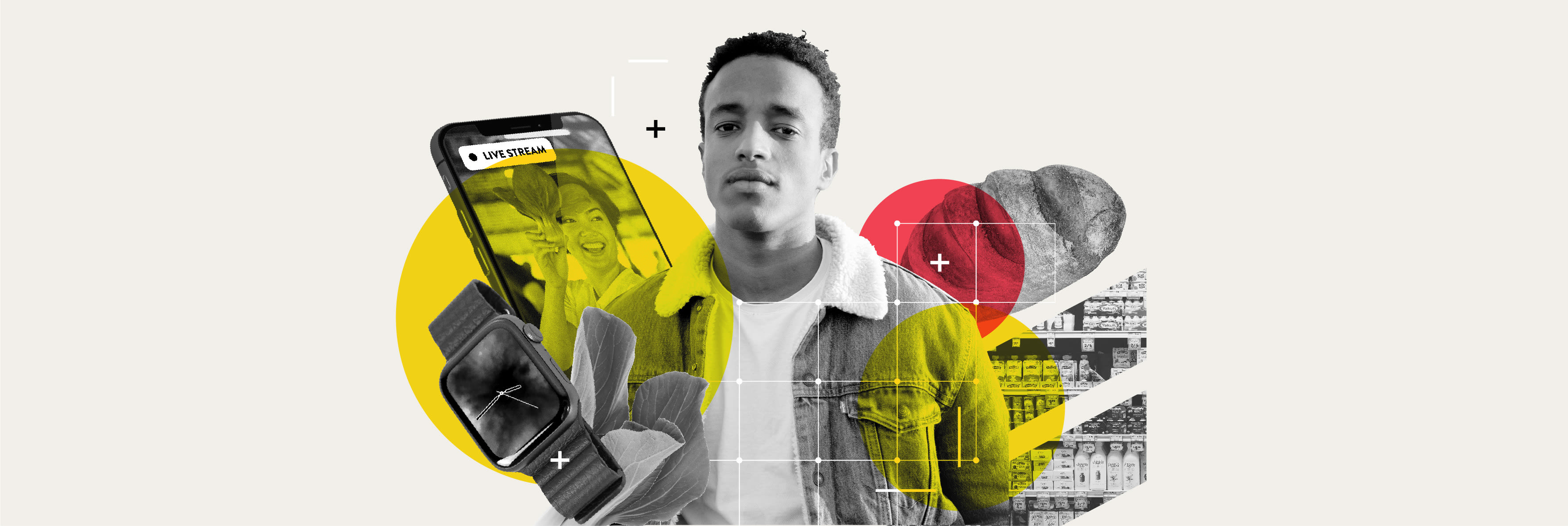
Creating live shopping experiences with influencers
Would you have guessed that the future of shopping was basically a hybrid of TV-shop and TikTok? In this future world retailers and brands have harnessed the full power of influencer collaborations and see physical shops as a source of content.
My name is Abdi. I’m 23 years old, studying to be a cook and I’m also a successful social media merchant. I have my own product portfolio on Pingstargram, where I promote products related to cooking. Right now I promote 23 different products that I have found from online shops around the world. I add one product every year, because I want to grow slowly and only promote products that I love. I have meat products on my counter and one of my products contains alcohol, so that limits my audience.
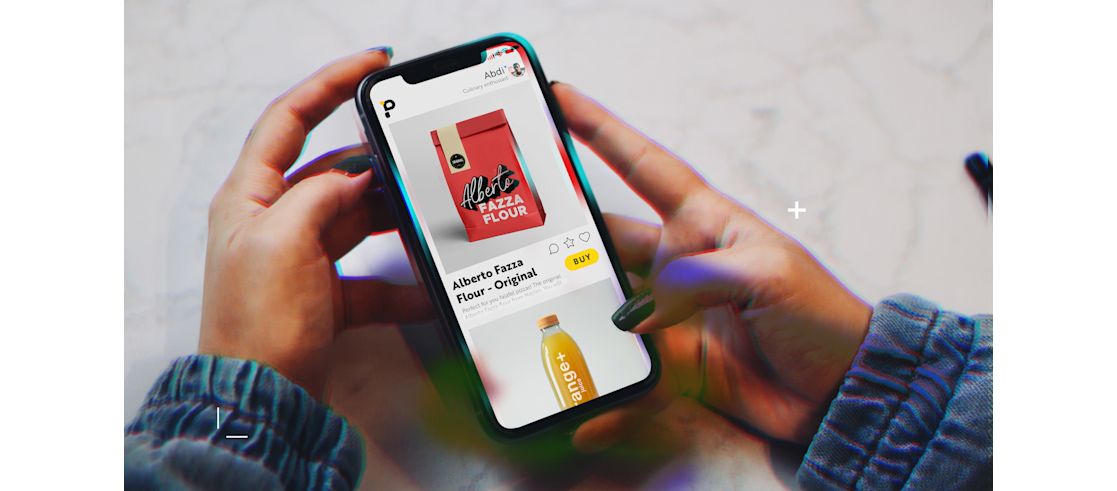
I can’t get over how much I love shopping for groceries in an actual store. When we were kids, my mom and dad made me and my sister visit a super market every Saturday. They had this great idea of saving money by doing proper planning and buying food and necessities for the whole week at once. It was horrible, but it was also kind of wonderful! We were tasting bread in the supermarket. We were smelling the cheeses. We had discussions about sustainability, calories, chemistry, fairness, money and politics. We were in the supermarket together, kind of hating how dull it was and kind of enjoying making decisions together.
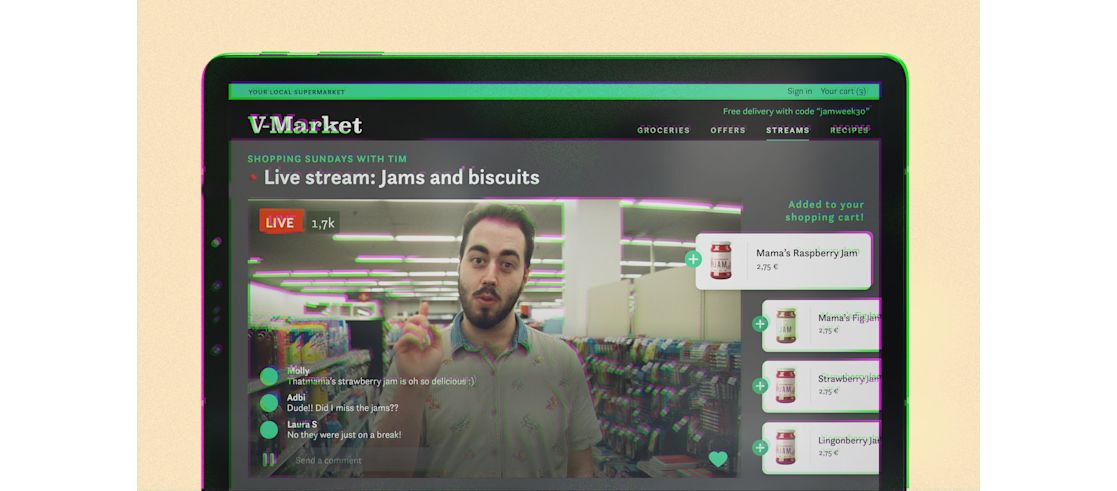
No wonder I’m a big fan of supermarket streams. Annual shopping spectacles are sometimes a bit too hectic for me, but I totally get that people cannot imagine holidays without them. I love slow content, like cooking streams, product intels and explorative shopping. If the presenter is good, I can watch hours of someone going through the cookie shelf, opening packages and seeing what’s inside. I don’t know what the deal is with me and the jam section - last time I watched a stream, I bought 3 jars - and cheese to go with them.
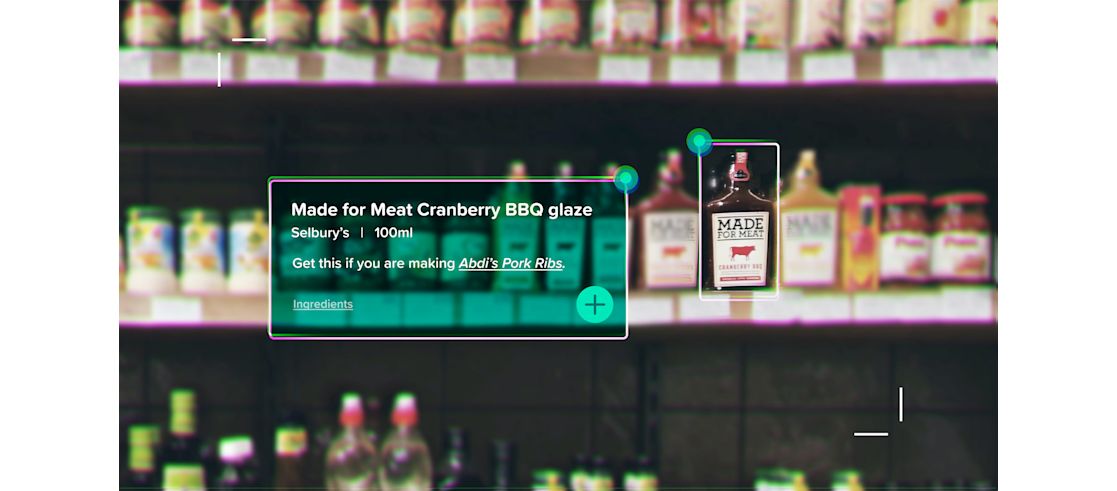
I buy groceries online, but I also regularly visit physical shops. It helps me calm down and the inspirational stuff, like ghost kitchen demonstrations, help me imagine new kinds of food art. I remember my mom getting all frustrated when she couldn’t find the right products in the store fast enough. No more of that. The supermarket AR app makes the products I want pop up from the shelves, and visual cues and a voice assistant help me navigate through my shopping list. If I want to see my mom’s notes on what she recommends, I just switch on the social comments, where I’ll see my peers’ and other streamers’ intel on the products. So hey - subscribe to my product portfolio and experience the Abdi-way-of-shopping, cooking and loving life with good food!
BREAKDOWN OF THE SCENARIO
Consumers
Much like today, consumers in this scenario rely on their peers, micro-influencers and social media stars for guidance on what to consume. Many have published their portfolio of favourite products on social media for others to purchase. Their selections may contain products from almost anywhere around the world. The promotions are not only about commissions: products and personal brands live in a creative symbiosis where they collect and share data to help each other stand out. Customers buy seamlessly via mobile, online stores, social media and streams, and it only takes one click to purchase the product. Consumers can specify their preferences and needs, such as special diets, brand loyalties or ethical considerations. People shop for their groceries online but also like to watch live streams from shopping events and buy the products on the spot. Stores are seen as happy places that bring feelings of continuity, sociality and security in a fast-paced world. AR helps them navigate the store and get personal advice from their peers in the store.
Retailers
Retail chains have become vital nodes in a global superstore network that brokers local products to international customers hungry for exotic experiences. Their platforms harbour data on brands, products, user segment behaviours and sales times. This data is shared with all partners on the platform, who use it for forecasting and making better decisions on products and services. Partners have developed business models around different data packages.
The network of platforms links influencers and products, emphasising customer-centricity because the relationship between the product and consumer is where the magic happens. Influencers allow platforms to monitor the traffic of recommendations and resulting orders and receive provisions in return. Retailers who invest in experimental content productions with influencers, shopping events and live shopping streams are starting to see the returns on their investments.
Brands
In this scenario, any small brand could gain the attention of a rising social media star and be launched to greatness. Data platforms make anticipating changes in demand easier - if an influencer is trending, sales of their favourite products will follow. The scenario assumes that platforms and systems (e.g. e-commerce and product data platforms) could easily connect and integrate to other platforms (e.g. social media and supply chains) to deliver the products they want to international customers. Import and export imbalances between markets are a risk, and local brands could suffer. Licensed production closer to the markets should be implemented in an agile manner when demand stabilises. In this scenario, securing the trade secrets of original manufacturers is vital.
Logistics
Stores are pick-up hubs, and retailers pre-order popular products in advance. Fresh food is still mainly produced and consumed locally, whereas jams, cheeses, wines, spices, sauces, beverages, snacks, candies and canned goods travel. The story is about a culinarian, but influencers could also be cross-selling appliances, apparel and textiles. This kind of global superstore fantasy would be environmentally challenging as products would be travelling in various directions at the consumers’ whims. On the other hand, if the total consumption stays the same and the CO2 keeps rising, we can imagine where it takes us...
On the other hand, this is already the case, except that global retail giants and international couriers manage the flows of products and money. In our scenario, more local players are involved. The flows of goods become more diverse with an AI that optimises routes and deliveries. A lot also depends on the kinds of products consumers prefer.
Key technologies
This story highlights social media shopping where some individuals promote products from near and far, and others purchase them effortlessly. Sophisticated platforms for harbouring, processing, sharing and handling data about the (possibly hyperlocal) products and their availability are needed.
As personalisation increases, easier service integration is required to create synergies. Standardisation and transparency of how services interact with each other help bring this about. For influencers and customers, an increase in personalisation also brings the need for an exceptional level of security and privacy. Here, technologies like zero trust architecture, edge computing and self-sovereign identity play an essential part. In zero trust architecture authentication is done for every step in the background and it does not allow access to the whole system at once. Edge computing brings computation and data handling close to the end-user. In practise this means mobile devices or computers that perform computation tasks earlier done in the cloud. Bringing computation closer to the actual source improves performance and privacy. Self-sovereign identity gives individual ownership over their identity, as opposed to technology companies or other institutions.
The platform’s user experience needs to be intuitive and enabling, without becoming a tracking nightmare, regardless of device. Zero trust system architecture answers these kinds of demands. In many cases, this sort of added security will not be visible to the user.
Technological enablers
- Data platforms
- Machine learning
- Edge computing
- Zero trust architecture
- Self-sovereign identity
Winners and losers
The winners in this world maintain information about local brands, look after their immaterial properties or make global shopping more environmentally sustainable. Retailers who have found ways to make shopping entertaining to consumers win; retailers who build their systems that are easily adaptable to new situations, with high-quality data and rapid integrations, win pole position in the race for success. For example, retailers that provide vendors with better product and sales information have the edge over the competition. Retailers who help customers realise their fantasies of global shopping will thrive.








